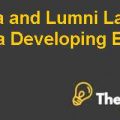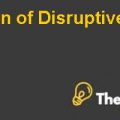
Decision Making Planning: The Meta-decision Approach
1. OBJECTIVE OF THE ARTICLE
Decision-making requires a series of steps to come to a decision; this process is called Meta-decision approach. The objective of this article is to formulate a set of guidelines that directs the controlling authority to take better and informed decisions in less time and in a cost efficient fashion. The article explores the two key activities of Meta-decision strategies, which include diagnosis of Meta-decision context along with evaluation of Meta-decision problem and the second is the selection planning of the Meta-decisions strategies. For simple situations, either there is a simple way of carrying out a decision or a familiar rational approach can be used that is acceptable. On the contrary, if a situation is dynamic, complex and uncertain in nature, then an in-depth analysis needs to be conducted, which is called Meta-decision approach.
Meta-decision approach is one that helps a group of decision makers to optimize on the decision making process. Furthermore, Meta-decision approach helps the GD (Group of Decision makers to make actual decision about who will participate in the decision-making process because the Meta-control is an authority which can directly or indirectly impact the decision-making process and its implementation.
2. SUMMARY OF THE ARTICLE
Meta-decision approach is a management approach, which helps decision makers in making informed decisions by enabling them to make decisions on each step in the alternative evaluation process. In addition, there are other tools that can be used to make decisions and these include: framing, decision analysis and political decisions. Framing refers to the mental structure that simplify our understanding of the complex reality, more precisely it can be said that framing is an art that begins with a symptom and then ends with a verdict in relation to the problem by involving possible decisions and dimension of their effectiveness.
The second is the decision analysis that includes: values, concepts, basis and judgments, which are easily understandable by most of the people and its applicability is also widespread. In addition to this is the politics in decisions, which involves factors that somehow influence the decision itself. Furthermore last but not the least, the prime focus of this article is Meta-decision that is the process in which the group of decision makers (GD) take decisions to reach to the optimal verdict and are subject to informality, non-traceability and develop solely in the mind of GD.
Moreover, the decision making process is followed by the decision made on the Meta-level (higher level). The organization with such a decision process in itself has a particular kind of control from the controller. The organizational decision making can be segmented into three sub headings, which include sub (groups, departments), aspect (the issues involved, the topics) and the phase (the process steps). In a nutshell, Meta-decision is a decision taken by the Meta-controller, who holds authority over the structure of the process at disposal. Two important things that need to be kept in mind while using Meta-decision approach involves self-awareness and the emotional self-regulation that may fall victim to biases. Moreover Meta-decision involves two tasks, one task is to decide the style of the decision ranging from Autocratic to Democratic (Thinking Style: systematic versus intuitive) and the second task is design of the decision. The activities of Meta-decision includes, diagnosis of the context of the decision and evaluating the Meta-decision problem, selecting or planning strategy for deciding and then implementing the chosen strategy to make the decision.
Out of these three activities, the diagnosis of the Meta-decision context talks about two perspectives primarily; one viewpoint is the time constraints in decision making (External or Internal Factors in the organization) and the other is the constraint of acceptance (culture, power distribution, perception of threat to decision makers and prevalent relationships among the people in the organization). However, the decision evaluation process can be distorted by the cognitive biases and the anchoring bias. In assessment of the level of knowledge on the Meta-decision, the information resource needs to be available and accessible. The opportunity that gives rise to the problem (known/unknown/partially known) or opportunity to conduct the decision analysis needs to be assessed for the structural implications of the decisions.
Important barriers that make the employees reluctant to change is the conflict of interest, which can only be resolved with participation: Filtered (Participation on the issue but relevant information is kept concealed), Addressed (Different degrees of participation for each element, and evaluation of alternatives is restricted to the financial analyst) or Full (Full access to all information and permission to participate with autonomy). In addition to this, decision process can be functional or dysfunctional and formal or informal depending on the type of the organization. In Meta-decision it is important for the organization to allocate the resources efficiently and to communicate to the employees ...........................................
This is just a sample partial case solution. Please place the order on the website to order your own originally done case solution.












